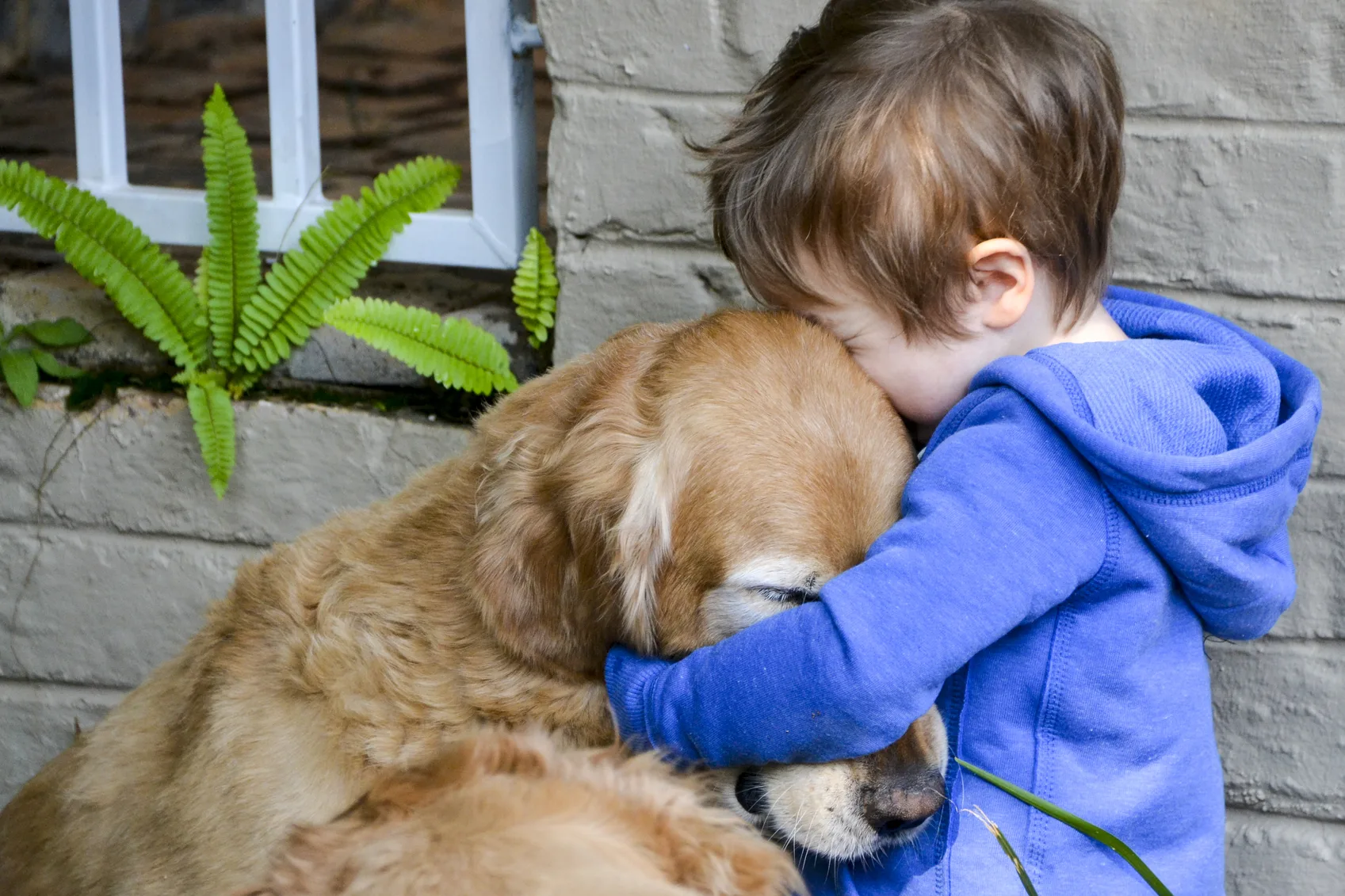Dogs have long been known as the perfect companion, providing unconditional love and gentle kindness. It is also common knowledge that dogs are beneficial in helping with disabilities and health conditions. Research has been promising in the beneficial assistance that therapy dogs provide to children with autism, a brain disorder that affects the ability to interact and communicate socially.
Last month, the Autism Society celebrated the growing awareness of Autism Spectrum Disorder (ASD) and the associated disorders of neural development with its National Autism Awareness Month, a celebration that has been happening annually every April since the 1970’s. The increase in awareness over the years has led to improvements in recognizing early symptoms and diagnosing ASD appropriately.
What Is Autism?
Autism is a developmental disorder that has wide levels of variation. ASD is a general term for a variety of complex disorders of the brain, which are typically recognized by difficulties in social interaction, verbal and nonverbal communication, and repetitive behavior. Fifteen years ago was the beginning of an autism epidemic, and many professionals and institutions did not know how respond. However, schools are beginning to include autistic children into the mainstream education system, for example, versus placing them in special education. Prior to the recent increased recognition of autistic children, it was believed that autism affected one in 2500 births.
According to the Center for Disease Control and Prevention (CDC), it was believed that in 2012 approximately 1 in 88 children were recognized as having ASD, which is 10 times more than 40 years ago. However, the CDC estimates that 1 in 68 children have been identified with ASD, which is approximately 14.7 per 1,000 8-year-olds. This is a 30% increase over 2012.
How Dogs Can Be Therapeutic Companions for Autistic Children
Fortunately, the increased levels of awareness have provided improved support for autistic children, including the new and growing field of using dogs therapeutically for those with autism. There are many way in which dogs can provide support and assistance to a child with autism. For instance:
Increases Social Confidence
In some studies and in-home observations, being around a dog helped autistic children in social situations. In groups of people, a dog helped other kids feel more comfortable to approach the child and engage in conversation and activities. Because individuals with autism can get very overwhelmed with sensory inputs, a dog may also provide a gentle presence that helps autistic children feel calm and less anxious about being around lots of people and noise.
Improved Behavior
It has also been noted that the presence of a dog can help autistic children behave better, both in public and at home. Dogs tend to cause the children to smile more and be less aggressive. Calmer behavior and better attentiveness also have been seen in children who are around therapy dogs.
They Are Calming
Generally, autism is characterized by impairments in social interaction, communication skills, and repetitive behavior. Alongside a child’s social and communication impairments are what appear to be random emotional outbursts. Of course, a trained dog accompanying an autistic child can be a calming presence, even in the middle of an outburst. However, that dog must be trained to stay calm despite the chaotic surroundings and a child can be taught to gently pet and hug his or her animal. Although a therapeutic dog does not work with all autistic children, it has been a significant support for those in which that relationship works well.
Reduces Repetitive Behavior
Behaviors such as rocking back and forth or shaking hands or clapping are examples of repetitive behaviors that autistic children sometimes exhibit. However, a child who learns to gently hug and pet a trained dog might spend more time doing that than participating in any repetitive behavior. It has been known that some trained dogs can even recognize the onset of a repetitive behavioral episode and interrupt the child before he or she begins.
Keeping an Autistic Child Engaged
Therapy dogs that work with autistic children are specifically trained in recognizing some of the challenges that children with autism exhibit. For instance, autistic children tend to wander off. However, trained therapy dogs can bark and alert the family when this happens and prevent this from happening by circling the child and keeping him or her engaged.
Being a Canine Companion
One of the most beautiful experiences of having a dog as a friend and companion is that animal’s ability to understand a human’s emotional needs and desires. This is also true with the use of therapy dogs for autistic children. Dogs can become a source of connection; they can communicate with children in a way that human beings cannot. Given the communication impairments of those with autism, dogs are ideal friends to have.
Assists with Safety
One concern with autistic children is that many of them do not have the same perception of safety as others do. This can lead to self-injurious behavior, wandering off into crowds, or other dangerous actions, which can result in social isolation and limitations. A trained dog can be very beneficial in this regards. whether in public or at home, an autistic child can be tethered to the dog’s harness to prevent him or her from running off. Dogs can also be trained to prevent the child from hurting himself by using touch intervention, pressure intervention, and mobility assistance.
While many autistic children benefit from the presence of a dog, some may actually become more hyper around a regular dog. For best results, it is often recommended to use a dog that has been qualified to be around a child with autism.
Typically, children who participate in at least 25 hours of structured, therapeutic activities per week; work with highly trained behavioral therapists; aim towards specific learning objectives; interact with peers with and without autism; cultivate social, communication, and daily living skills; and who have a team of professionals working together on their behalf are likely to experience an improvement in symptoms of autism and their quality of life. It is becoming more and more clear that this typical treatment plan for autistic children can include the use of therapy dogs dogs. Dogs can enhance a healing and nurturing quality of life and bring a sense of unconditional love that only animals know how to communicate.

